
Imagine an accessible crag with a superb sunny aspect, having fifteen routes, some up to 100 metres in length, grades ranging from MS to E1, and boasting 27 stars between them.
You might expect it to be busy on a summer week-end, maybe with queues forming at the starts of the most popular routes. Well, you'd be wrong, for this is Gimmer's North-West Frontier zone.

Gimmer Crag must be the most climbed-upon high crag in the Lakes, and for good reason. Access is reasonable, and its aspect and lack of major drainage lines mean that it quickly comes into condition and is bathed in sunshine most of the day (Lakes weather permitting). Even a climber of modest pretensions can visit Gimmer many times without having to repeat a route, and surely no crag in the district has a greater percentage of top quality lines. Many of its routes easily bear repetition, and this is perhaps one reason why its north western extremities are seriously neglected. The lower reaches of North West Gully are the most popular part of the crag, having many much–loved classics including The Crack (VS 4c) (VS 4c,4c,4c) and shorter routes such as North West Arete (VS 4b) (VS 4b) leading up to Ash Tree Ledge and further classics such as 'F' Route (VS 4c) (VS 4c). Such routes and combinations have parallel partners at both lower and higher degrees of difficulty. This embarrassment of riches may also explain why the highly frequented routes cease abruptly to the left of The Crack.
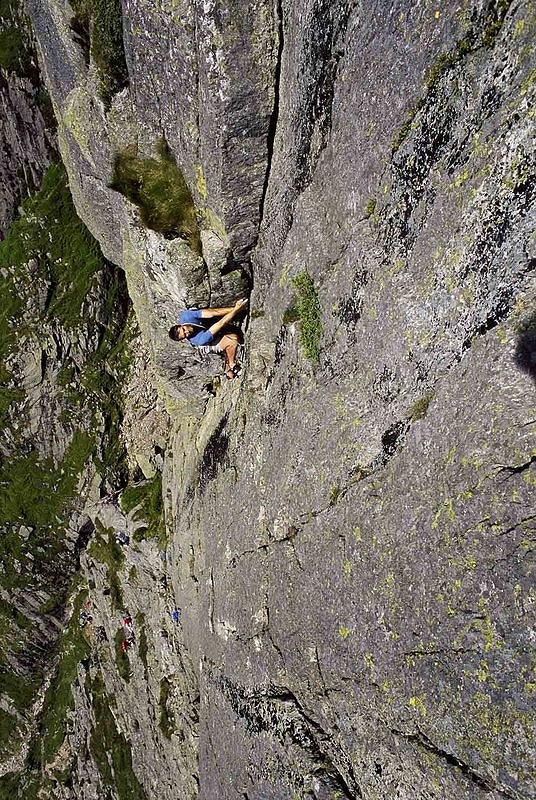
The first route happened on here is Outside Tokyo/Dight (E1 5b) *** (E1 5b,5b,5a), which follows an impressive slabby area reaching the full height of the crag. Unlike most of the routes described below, it is climbed quite frequently.
Although some of the routes here can take a bit of finding, and may involve some scrambling to reach their starts, the next route is easily spotted, as it follows a huge left-facing corner, and it can easily be started via the first pitch of The Crack if desired. This is Hiatus (VS 4b) ** (VS 4b,4a,4b,4b), and is the route which first opened my eyes to the possibilities offered by this part of the crag. Admittedly, part of pitch is rather green after a wet spell as it is the chief drainage line of this part of the crag. As you set off up the first few moves of pitch 2, which starts the corner, you may be wondering why you're climbing such a grotty, vegetated line. But persist, and you'll soon be rewarded by some absorbing climbing in positions which become steadily more spectacular and exposed, as the security of the corner is left behind and the leader pads off on a diagonal line across undercut and overhung slabs, with the rest of the route hidden tantalisingly around an arête. I'm sure that it is only those first few feet of the big corner which prevent the route being given three stars. It's a very different route from The Crack, but equally as good.
Hiatus (VS 4b)
Pitch 1 (4b) Climb the steep wall just left of the start of The Crack (by-passing the queues) to a ledge. Sneak round left over grass ledges (to avoid the hard steep crack) to climb a broad scoop, then round the arête to climb its right side, passing the crowds on the stance for The Crack, Dight, Gimmer String, etc. (It is possible but less pleasant to climb the right leaning corner/gully to reach the same point). Cross the dank gully and climb ledges diagonally left to reach a large cosy ledge at the foot of the huge soaring corner groove.
Pitch 2 (4b) Climb the initially manky corner for about 10m to a ledge on the left (tiny juniper tree). (Inertia starts here, up the hanging groove to the right.) Continue up awkward cracks, then the corner proper, finally the slab (loose block) to a fine small stance in a shallow recess.
Pitch 3 (4b) The best 4b pitch on the crag, with superb and devious climbing in spectacular and exposed positions. Steady leader and second required. Climb up rightwards towards the corner then traverse left over an alarmingly perched pillar to reach a small chimney. Up again, then traverse left across the overhung and undercut slab to reach the foot of a square-cut L-facing corner. Climb this for 2m then follow a devious up-and-down traverse below a hanging rib to reach a groove leading to a superbly positioned stance.
Pitch 4 (4b) Short but sweet. Neglect the evil-looking mossy cracks above (Bridge's Variation, 5a) in favour of the exposed slabs up and left, and finish up a short awkward groove.
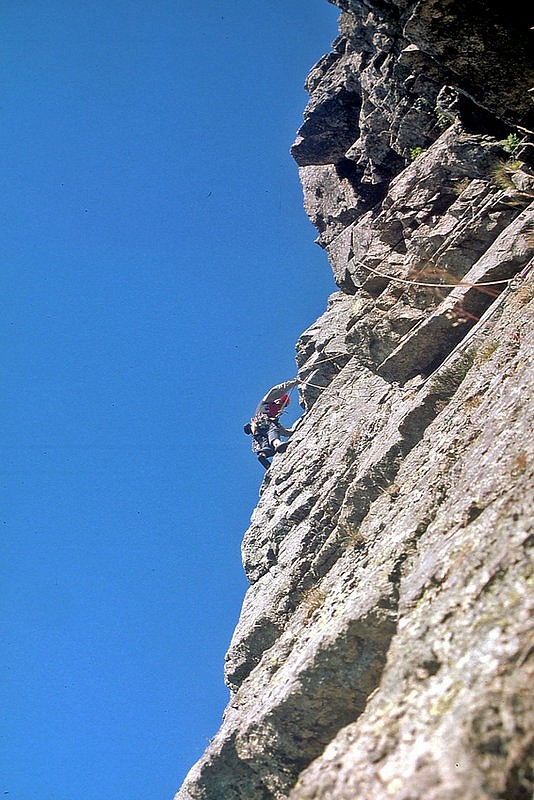
If you want something a little harder, the corner pitch of Hiatus is the starting point for three HVS routes, Inertia (HVS) ** (-,5a,5a), Grooves Superdirect (HVS 5b) ** (-5a,5b), and Grooves Traverse (HVS 5a) ** (-,5a,5a). These routes depart the big corner at progressively higher and higher points, and all find interesting and exciting lines to the top. Inertia breaks away first, after about 15 metres with a belay on a ledge with a tiny juniper. The next pitch sets off up a dauntingly steep corner groove on the right, which is only entered with some difficulty. A series of committing moves lead up the right wall of the corner till the holds run out and you must make a short heart-in-mouth traverse to a good and obvious foothold on the arête. What lies beyond? It's hidden from view, so you'll have to do it yourself to find out, but it's good. Grooves Traverse has the least new ground of the three, as you must go almost to the huge roofs which dominate the corner before leaving Hiatus. (In fact belay at the end of Pitch 2 of the parent route.) The route traverses out right across some strange leaning terrain which threatens to tip you off, with the outcome in doubt all the way till you arrive at a minute stance (with, thankfully, good gear) perched dramatically on an undercut arête. Here, there's not much alternative to leading through.
Just below the start of The Crack there is a sort of dry waterfall feature in the gully adjacent to a huge chockstone, which is climbed to reach the starts of The Crack etc. To reach many of the routes of Gimmer's N.W. Frontier you must scramble a little further up the gully. Shortly, you'll reach a large flattish chockstone, with another small dry waterfall feature on its right. From here a rather vegetated, tricky and exposed rising traverse (rope recommended) leads to steeply-sloping pasture with a widish bay at the top. The foot of Hiatus's big corner pitch can be reached from here, but the reasons for attaining this spot are Carpetbagger (VS 4b) VS (**), Godiva Groove (VS 4b) VS (*), Grand Finale (E1 5b) E1(***) and Elektra (HVS), (a recent addition, produced since the current guidebook). The E1 is furthest right, starting up a grooved buttress. This route covers some interesting terrain on good clean rock, but isn't totally independent. Its crux is very short but very hard for the grade, and much harder than anything else on the route. For these reasons its 3 star rating is controversial, but a fine route nevertheless.
Grand Finale (E1 5b)
Pitch 1 (4c). Start right of Godiva Groove below a buttress with a crack/shallow groove running up it. Climb the groove pleasantly left then right of the crack. Continue up a laid-back arete to a stance at the foot of a blunt rib, below a precarious-looking flake a few metres left of the corner of Hiatus Pitch 2.
Pitch 2 (5a). Climb up by the flake and step right on to a short slab. Climb the right edge of the bulge above the slab with increasing difficulty until the angle eases and continue to belay on a small stance (as for end of pitch 2 Hiatus) some way below the impressive overhangs.
Pitch 3 (5b). Climb the left edge of the slab above and follow the line of Hiatus, traversing left across the overhung and undercut slab to reach the foot of a square-cut corner. Climb the corner until a very cramped "resting place" is reached below the roof. Round to the right is to be found a rattly fang which is reached with difficulty and used to traverse the steep holdless wall (crux) to good holds and the sanctuary of a corner. After equanimity is regained, the corner leads uneventfully to the top.
Ten metres or so left of the start of Grand Finale at the highest point of the "pasture" is the somewhat unappealing start of Carpetbagger VS (**). Although the route is given 4b for each of its three pitches in the current guide, I think 4c for each pitch is more realistic, but the two stars it gets are certainly justified.
Carpetbagger (VS 4b)
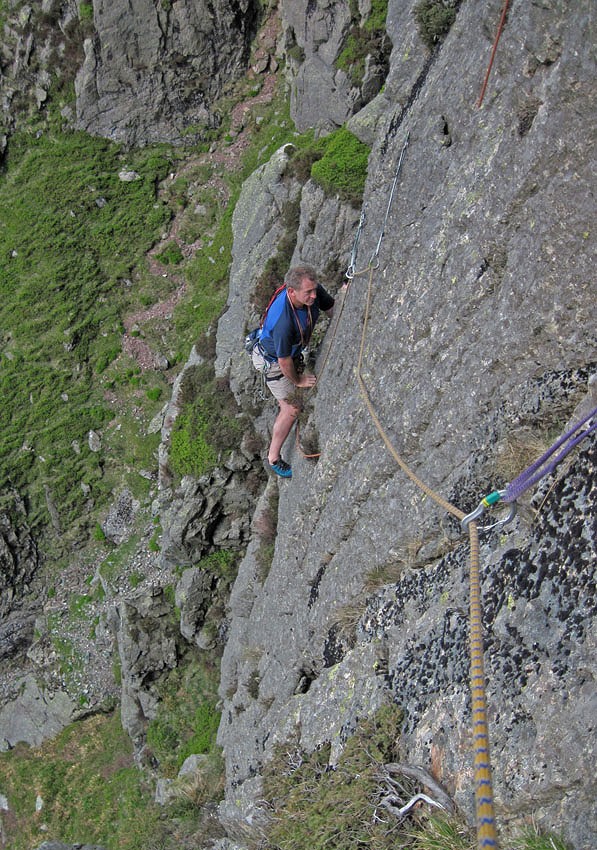
Belay 5m below a small pinnacle which may have some tat on it. Above is a prominent groove with a slabby left wall and a sharp arête to its right. This is Godiva Groove (see below).
Pitch 1. (4c) Climb diagonally right to reach a ledge right of the groove then up the overhung slab till it is possible with difficulty to gain a slim tapering groove on the right. Climb this to reach an optional stance below a slabby wall right of the sharp arête. Climb the wall pleasantly till a difficult traverse right is possible passing a dubious flake to belay below a large overhang which caps a grassy gully.
Pitch 2. (4c) Climb diagonally left below some small overhangs. Just before reaching the arête overlooking Godiva Groove climb onto a slab and continue with some difficulty up a groove line to belay in a corner below a dirty looking mossy line (Bridge's Variation Finish to Hiatus). Belay shared with Hiatus
Pitch 3. (4c) An exposed and exciting finish. From the bottom of the mossy line hand-traverse out right below the overlap till it is possible to climb up onto the arête. Finish ,still exposed, up the arête.
Godiva Groove VS (*) is a pleasing companion route to Carpetbagger, which starts just left of that route. Although a little scruffy in places, the moss doesn't detract from the enjoyment of the route, which follows a generally direct line, though diverting left through some good steep terrain where the groove becomes less appealing.
Godiva Groove (VS 4b)
Start in the bay at the top of the "pasture". Scramble up a left-leaning vegetated groove to a pinnacle on the right. Belay. Traverse right to reach the slab/groove.
Pitch 1 Avoiding the large block which nestles there, climb the rib to a slab below overlaps, then dodge right back into the main groove. Belay on right arête after a few moves up.
Pitch 2: Continue up the groove. Where it starts to look steeper and less inviting, climb up left on steeper rock to a ledge below a line of overhangs. From the left end of the ledge climb with interest and some difficulty via grooves and a short wall to the top.
Further up the gully there is a fork, the right branch of which leads to the now unused descent route, Junipall Gully. By scrambling up the lower part of the gully one can reach the start of Nocturne VS (**) in a confined section with a line of overhangs on the left wall. Belay. Personally, I feel two stars may be an exaggeration of its worth, but this is another adventurous route which has been sadly neglected over recent years, and a queue is most unlikely. The route starts by a rising traverse across an awkward slab of superb rock below overhangs, which are breached at their narrowest point. Slabs above give excellent, if somewhat bold climbing.
Nocturne (VS 4b)
Pitch 1: (4c) Traverse out left below overhangs with some difficulty (but good pro) to the left edge of the slab. Climb spectacularly through what is now an overlap into a somewhat mossy groove which leads to a niche. Easily up rightwards to a good ledge with small nut belay and loose flakes.
Pitch 2. (4b) Climb the slabs above, quite boldly, easily at first, but steepening. Pass a small overhang on its right and continue with interest to the right end of a large vegetated ledge. Either continue up the steep crack for a few feet before traversing left to an overhung niche (rather artificial and 4c) or walk along the ledge before scrambling up to the niche.
Pitch 3: (4c) Climb up leftwards to ledge on the arête. Take the mossy cracks above (right one, then left one) to the top. (This last sentence is my interpretation of the route – I couldn't see the mossy corner on the right referred to in the guide).
So if you have done many of the well-trodden classics on Gimmer, and feel like a bit more adventure, solitude and route finding, you could do worse than explore Gimmer's North-West Frontier. Apart from Hiatus and Inertia, none of the routes above are in more than 5 UKC logbooks.
Author's Note: All route descriptions above are the work of the author, who must be held responsible for any imperfections.
Logistics
Accommodation Advertise here
No Premier Listings found in this area
Instructor/Guides Advertise here
No Premier Listings found in this area
Outdoor Shops Advertise here
No Premier Listings found in this area
Climbing Walls Advertise here
No Premier Listings found in this area



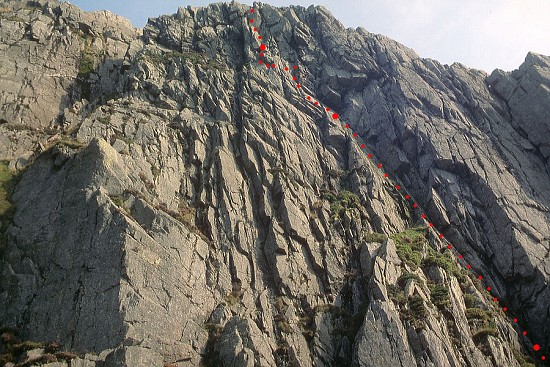
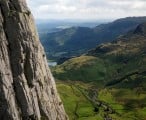
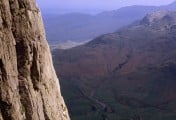

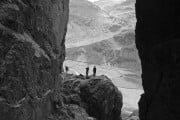
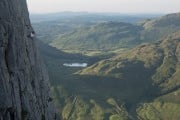








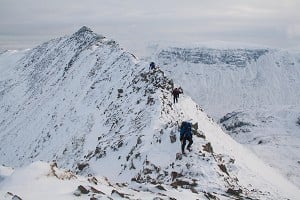
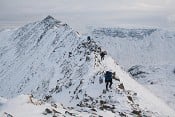



Comments